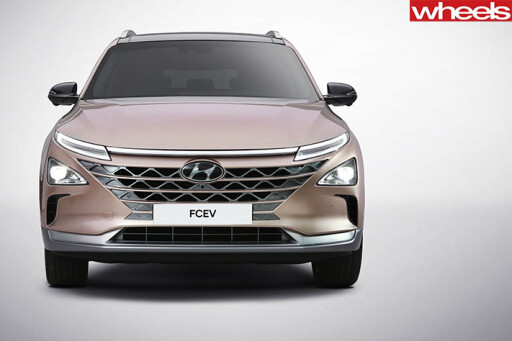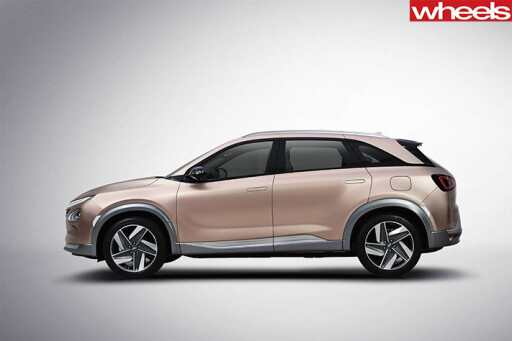
HYUNDAI’S dogged commitment to hydrogen as a fuel of the future has taken another step forward today with the company finally revealing the name – Nexo – and full technical details of its all-new fuel-cell SUV at the Consumer Electronics Show (CES) in Las Vegas.
Pitched as the technological flagship of Hyundai’s fledgling eco-vehicle range (the Korean brand hopes to have 18 eco-friendly models on sale by 2025), the Nexo is a replacement for the current ix35 FCEV and the first model spun off Hyundai’s dedicated FCEV architecture.
The headline stats are impressive: significantly roomier than the car it replaces, it’s also more powerful, accelerates quicker, can be fully recharged in as little as three minutes and, if Hyundai insiders are right, it can travel almost 1000km on a single tank (the official range is a conservative 800km).

There’s a glut of technical firsts for the brand too, with some of the tech likely to filter down to conventionally powered Hyundais. Leading the charge is an evolved version of the typical blind spot monitoring system that uses rear facing cameras to project footage from behind the car onto the centre screen when either indicator is used. Hyundai calls this an industry first, though Honda has been using a similar system on the kerbside only of its models for years.
A new generation voice recognition system also debuts, which doesn’t only control functions like the air-con, sunroof and door locks, but extends beyond the car and into the owner’s home. Owners can ask the car to turn lights on inside their house, for example, or stream the same song being played in the car into their living room for a seamless arrival experience.

The system can also detect and understand multiple requests in one command, though given the frustrating nature of most existing voice command systems we’ll try this at CES later today before passing judgement on how effective it is.
Similar to what Mercedes-Benz does with its S-Class flagship, the Nexo boasts a ‘Wellness Care’ system that monitors the driver’s behaviour via sensors on the steering wheel and seat, and will change the music and interior lighting if it thinks the driver is stressed. The system can even call a doctor should things turn dire.

A remote parking feature that allows Nexo to park and retrieve itself is also available, though its unclear if it will be enabled for local use when the first 20 models arrive in Australia later this year.
Powertrain wise, Nexo powers the front-wheels via a redesigned fuel-cell system that combines a 95kW/h hydrogen cell and 40kW/h battery with a 120kW electric motor. Despite slight performance gains, however, it’s still no sportscar, with 0-100km/h taking 9.5sec, roughly the same as Hyundai’s Kona small SUV.

Don’t expect Nexo to be a sales phenomenon either. While the rest of the automotive world invests heavily in hybrids and EVs, hydrogen still faces substantial infrastructure challenges. Currently there are just 63 hydrogen refuelling stations in America, and 118 in Europe. Australia has two. And with local pricing tipped to land somewhere in the $80K bracket (Hyundai is still finalising its sales approach), it’s clear hydrogen has some way to go to rival EVs.
“But we’re playing the long game,” Hyundai’s fuel cell program leader, Scott Nargar, told Wheels. “Long-term Hydrogen is cleaner, faster to recharge and more viable.”



COMMENTS